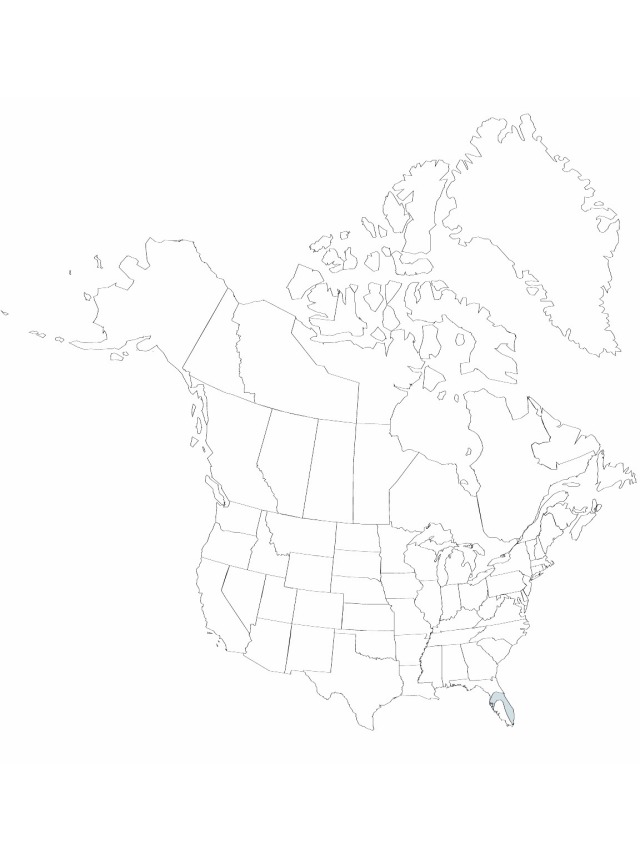Musa paradisiaca
Sp. Pl. (pro sp.) 2: 1043. 1753 (as species).
Pseudostems moderately blotched. Petioles: margins of adaxial groove erect to incurved, ± winged proximally. Inflorescences: pedicels rather long; bracts of staminate flowers lanceolate to ovate, apex acute to broadly acute, abaxial surface purple, adaxial surface reddish purple or crimson. Stam inate flowers white, cream, or pink. Pistillate flowers: stigmas usually yellow; each locule with usually 2 ± regular rows of ovules.
Phenology: Flowering all year.
Habitat: Abandoned gardens and disturbed sites
Elevation: 0–20 m
Distribution

Introduced; Fla., Mexico, West Indies, Central America, South America, Africa, Asia, Pacific Islands (Oceania).
Discussion
Plants of Musa × paradisiaca combine the characters of the two parents, M. acuminata and M. balbisiana, in various ways. Musa acuminata is described above. In M. balbisiana, the blotching on the pseudostem is pale or absent, the margins of the adaxial groove of the petiole are incurved and not winged; the peduncle is glabrous, the pedicels are long, the bracts of staminate flowers are ovate and obtuse, widest at least 0.3 above the base, with the outer surface brownish purple and the inner surface uniformly bright crimson; the apex remains plane when bract spreads, and the bract scars are not very prominent. The flowers are often tinged with pink, the free tepal of the staminate flower is always plane, and the ovules are in 4 irregular rows per locule. The description of M. × paradisiaca is based on plants with the AAB genome, by far the commonest hybrid bananas in cultivation. For data on characteristics of various other strains of banana, see N. W. Simmonds and K. Shepherd (1955).
Selected References
None.